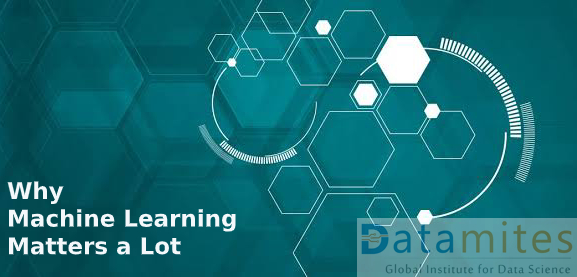Machine learning is said to be the core for the sub-area when it comes to the artificial intelligence. This helps in enabling the computers to get to a mode which is of self-learning and that too without any getting explicitly programmed.
What is Machine Learning
It is seen that when they are exposed to the new data, these computer programs are said to enable to learn, change, grow and also to develop by themselves. SAS, which is a North Caroline-based analytics for a software developer is said to be using the definition for Machine learning as it is a method of data analysis which helps in automates analytical model building.
Why Go For Machine Learning?
When it comes to the machine learning, this language is used to apply in Google self-driving car, online recommendation, and cyber fraud and also in social media platform. In Machine, it can aid in filtering some useful pieces of information which help in the major advancements.
It is seen that with this evolution in the field, there is a rise in the uses, importance of learning and demands. Big data is in part due to the increase in sophistication of machine learning, and it helps to analyze with big data.
Learn Machine Learning with Python Programming in Bangalore and become ML expert.
Uses Of Machine Learning
Data analysis are said to be characterized by trial and error method. The approach that it makes is said to be impossible when the data that are set are said to be large and also heterogeneous. It is seen that machine learning comes as the solution for all the chaos and by proposing with clever alternatives so that it can analyze with some huge volumes of data.
As per the report by McKinsey, it said that when the analog world becomes digitized, the ability to learn from data is by developing as well as testing the algorithms. It will only become more important when it comes to traditional businesses.
Different Machine Learning Methods
There some methods which are used for machine learning. They are mentioned below.
1. Supervised Learning
When it comes to this kind of learning, then it is seen that the inputs, as well as outputs, are identified, and the algorithms are trained. This learning is used in applications like the prediction of future events and historical data.
2. Unsupervised Learning
Unsupervised learning is said to be used with many data sets without any historical data. This explores the surpassed data to find about the structure. This kind of learning will work as best for the transactional data.
3. Semi-Supervised Learning
This learning includes both supervised as well as unsupervised learning. It uses both of the labeled and unlabeled data for the training.
4. Reinforcement Learning
This is the type of data analysis with an algorithm that discovers with trial and error, and it finally decides with the results in a great reward.
Three components in this are:
- Environment.
- Agent.
- Actions.
These are some of the machine learning methods which are used in the machine. These languages are important as with the help of this only; you can command a machine to do your work.
Datamites is providing Machine learning course through ONLINE mode and Classroom mode. Choose based on your flexibility and become ML expert.

Comments
Post a Comment